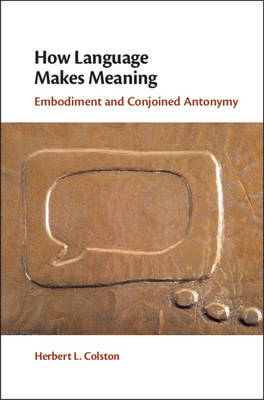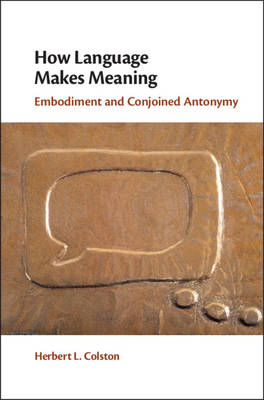
- Afhalen na 1 uur in een winkel met voorraad
- Gratis thuislevering in België vanaf € 30
- Ruim aanbod met 7 miljoen producten
- Afhalen na 1 uur in een winkel met voorraad
- Gratis thuislevering in België vanaf € 30
- Ruim aanbod met 7 miljoen producten
Zoeken
€ 139,95
+ 279 punten
Uitvoering
Omschrijving
Language's key function is to enable human social interaction, for which people are motivated to engage by powerful brain mechanisms. This book integrates recent work on embodied simulations, traditional meaning-making processes and a myriad of semantic and other meaning contributors to formulate a new model of how language functions following a pattern of conjoined antonymy. It investigates how embodied simulations, semantic information, deviation, omission, indirectness, figurativity, language play, and other processes leverage rich meaning from only a few words by using inherently biological, cognitive and social frameworks. The interaction of these meaning-making components of language is described and a language-functioning model based on recent neuroscientific research is laid out to allow for a more complete understanding of how language operates.
Specificaties
Betrokkenen
- Auteur(s):
- Uitgeverij:
Inhoud
- Aantal bladzijden:
- 300
- Taal:
- Engels
Eigenschappen
- Productcode (EAN):
- 9781108421652
- Verschijningsdatum:
- 12/12/2019
- Uitvoering:
- Hardcover
- Formaat:
- Genaaid
- Afmetingen:
- 168 mm x 238 mm
- Gewicht:
- 635 g

Alleen bij Standaard Boekhandel
+ 279 punten op je klantenkaart van Standaard Boekhandel
Beoordelingen
We publiceren alleen reviews die voldoen aan de voorwaarden voor reviews. Bekijk onze voorwaarden voor reviews.











